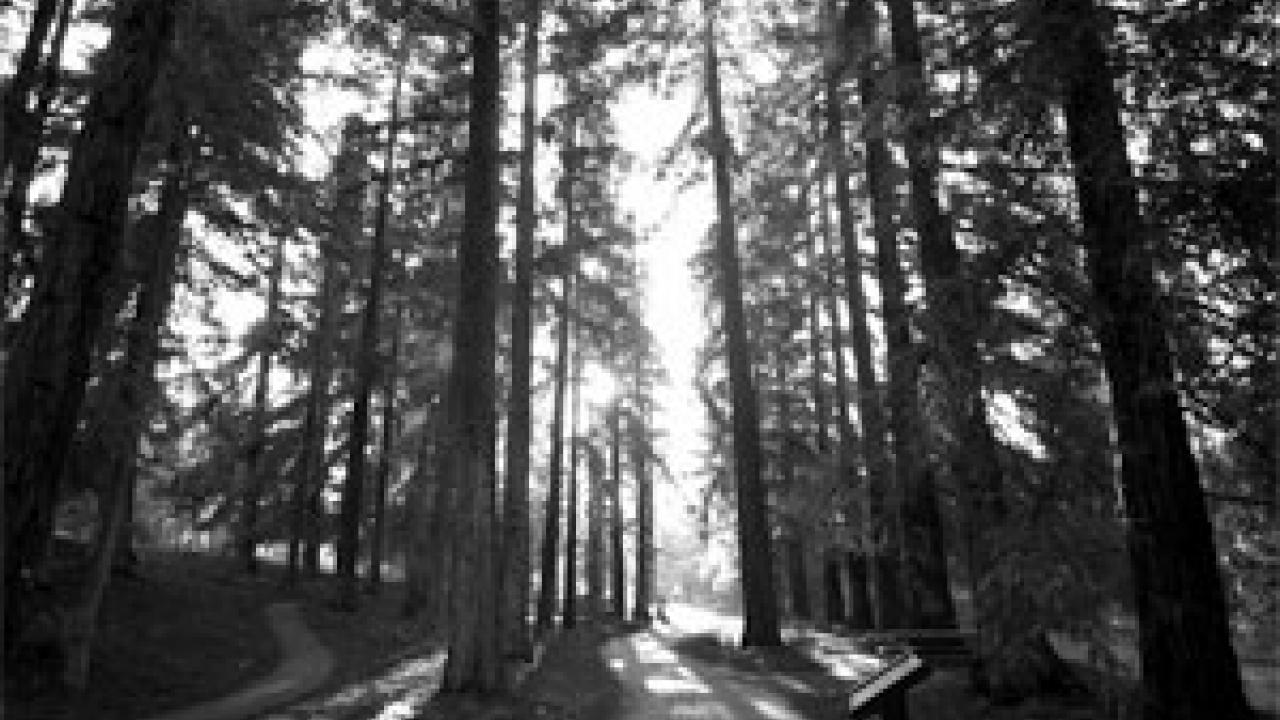When students and faculty members planted redwood trees in the UC Davis Arboretum in 1941, they were looking to the future and creating a legacy for the campus community.
This year, the arboretum extended that vision with a recently completed major renovation of the Redwood Grove, along with a similarly extensive renovation of the Shields Oak Grove now in the beginning stages.
"We envision transforming our 100 acres of gardens into a vibrant, exciting living museum, supporting and extending the campus mission of learning, discovery and engagement," said Diane Cary, arboretum communications director.
Renovation of the redwood grove, located along the arboretum waterway just east of the University Club, began with the Class of 2000. Students designated their senior gift of $23,000 to help improve and conserve what many consider their favorite place on campus, Cary said.
"The design was intended to enhance the grove without disturbing the stillness and sense of seclusion that make it so special," she said. Highlights include a gathering circle with low seating walls and a small fountain.
Two UC Davis alumni served as lead consultants -- arborist John Lichter and landscape architect Ron Lutsko.
In the summer and fall of 2003, an arboretum landscape crew graded the area, installed drains, re-aligned the existing path and built new paths. They aerated the soil to benefit the trees, and a team of Rotary Club volunteers, including Provost Virginia Hinshaw, shoveled decomposed granite to surface the paths.
The campus Grounds Division worked with contractors to install lighting and irrigation and to build the gathering circle and fountain. Rotarians Ernie Head and Hal Sconyers built seven new picnic tables and benches for the grove using old redwood lumber salvaged from a campus bridge.
In addition, more than 100 volunteers planted some 10,000 shrubs and perennials under the trees to reflect what one might find in a natural redwood forest. The plantings include 30 kinds of shrubs and 70 kinds of perennials and groundcovers.
But the renovation was intended not only to improve the health and appearance of the redwood grove. The goal also was to enhance its function as a living museum -- an outdoor classroom and laboratory where visitors can learn from the plant collections, Cary said.
In addition to recreational users, the arboretum attracts more than 250,000 visitors each year through its educational programs for schools, guided tours, workshops and classes, field trips and publications. And more than 50 classes -- from environmental horticulture and landscape architecture to education and art -- make use of its collections.
To help visitors gain more from their visits to the arboretum, staff conducted a survey and began designing an exhibit based on the strengths of the plant collections and the interests of visitors. The visitors surveyed cited redwood trees as one of the top plants of interest.
Staff also identified key educational messages -- for example, how to decide whether to grow a redwood tree at home. Other topics of interest also were incorporated into the new exhibit.
Teams of volunteers developed mock-ups of interactive signs and tested them in the grove, observing visitors' responses and interviewing visitors to see how much they remembered about the messages afterward. "The teams refined the signs until they were sure that each would attract and hold visitors' attention," Cary said. Thirteen educational signs were produced and installed.
The landscape and exhibit development costs more than $250,000.
place to honor people
In addition to being a place for relaxing and enjoying the environment, the grove also now provides a place to honor people.
Workers installed a copper plaque along the seat wall in the gathering circle that is engraved with redwood foliage and lines of poetry as well as the names of donors and honorees. Names of future donors to the arboretum also will be engraved, and arboretum supporters may also sponsor benches and picnic tables in the grove, Cary says.
The renovation illustrates how campus and community partnerships are helping the arboretum grow and succeed, Cary says. Several Davis service club members offered their time and energy to the project, and the project received financial support from the Friends of the Davis Arboretum, several private and public donors, and more than 700 students from the UC Davis Class of 2000.
The renovation is an example of the arboretum's vision for future development, Cary says. Next on the list of major renovations is the oak grove. This year, with a $47,000 grant from the federal Institute for Museum and Library Services, the arboretum will be doing some major structural pruning and installing a new irrigation system for the oaks. Educational messages for the oak grove also are being planned.
"And we are thinking about which trees to feature on an interpretive trail, with signs like those in the redwoods," said Cary, adding that the arboretum hopes to rehire landscape architect Lutsko next year to plan a new path system and undergrowth plantings for the oak grove.
Volunteerism will again be a key component of the plan.
"Then we'll have to raise the money to implement the plan," Cary said.
To make a donation to the project, contact Amy McGuire at (530) 754-5126 or almcguire@ucdavis.edu. Suggestions include contributing $1,000 for a copper plaque with a name etching or $4,000-$8,000 for a bench or table.
Media Resources
Amy Agronis, Dateline, (530) 752-1932, abagronis@ucdavis.edu
